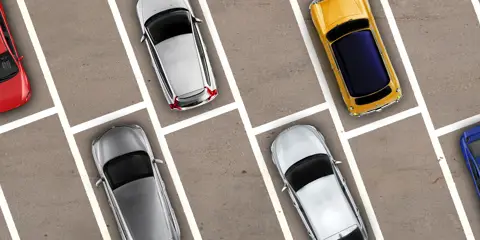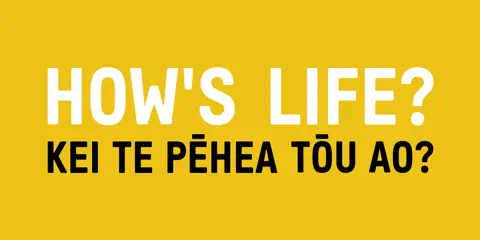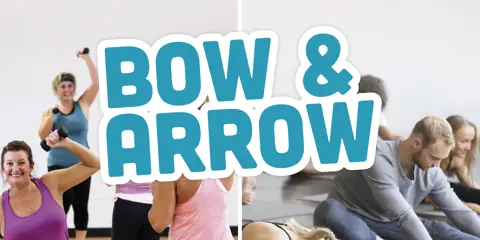- Services
- Rates & Property
-
Rubbish & Recycling
- How we recycle in the Queenstown Lakes District
- Cut your waste
- Commercial Services
- Public place litter bins and illegal dumping
- Rubbish & Recycling Collection
- Recycling Centres
- Transfer Stations
- Solid Waste Assessment
- Waste Minimisation Community Fund
- Waste Minimisation for Businesses
- Zero Waste Events
- Green and food waste
- Construction and demolition waste
- Building Services
- Resource Consents
- Environmental Health
- Transport and Parking
- Alcohol Licensing
- Animal Control
- Airports
- Environment and Sustainability
- Water Services
- Cemeteries
- Services A - Z
- Summer Services
- CCTV - Public Use
- Permits
Waste Minimisation for Businesses
Te whakaiti para mō kā umaka
QLDC is committed to helping our community become a low waste and low emissions district. Learn more about how you can play your part as a business by minimising and managing your commercial waste and recycling effectively.
Quick links
The benefits of reducing business waste
Environmental sustainability has become a key part of doing business in Aotearoa New Zealand. Customers, employees and other stakeholders are expecting and demanding more from organisations. Reducing your business’ waste plays a major part in reducing your environmental impact and has numerous additional benefits. These can include:
-
Improved brand perception - people want to understand and feel good about their purchasing decisions. 48% of New Zealanders have deliberately switched to a more sustainable brand or service provider (Colmar Brunton Better Futures Report 2020).
-
An improved bottom line - valuing resources and reducing your business waste leads to a direct decrease in waste disposal costs.
-
Innovation - minimising waste can lead to new partnerships and creative solutions.
-
Leading change - reducing your business waste can create a ripple effect, inspiring and motivating other organisations to reconsider their own waste management practices.
-
Greater employee engagement - demonstrating that your organisation cares about sustainability can help attract and retain staff, with 73% of New Zealanders saying it’s important for them to work for an environmentally responsible company (Colmar Brunton Better Futures Report 2017).
-
Safeguarding resources - minimising waste creates a more circular approach where resources are used for as long as possible.
Getting started
-
Involve your staff, suppliers, customers and stakeholders from the outset. Getting your team onboard early means you are more likely to secure the resources you need. Taking the time to ensure your team understands how waste minimisations fits in with the company’s strategy and brand will help with long-term success. Think about including waste minimisation objectives into business manuals and staff inductions.
Close -
Inspect and take stock of your business waste and processes. This will give you a picture of where the opportunities are, and where to start. A full waste audit by a specialist provider, like Wānaka Wastebusters, will measure and put a dollar figure on your waste, providing practical solutions that can help set you on the right path.
Close -
Once you’ve inspected your waste, the next step is to develop a waste minimisation plan. This will outline the ‘what’ and ‘how’ of your waste minimisation actions. It needn’t be huge, but having a written plan is key to making sure everyone in your team is on the same page and knows what needs to be done.
Close -
This is a really important step. Keeping track of the changes you make is a great way to keep your team motivated. Key measures might include the volume of waste and recycling your business is creating over time e.g. number of bins, and also the cost that you are paying for disposal. Celebrate the wins, regardless of size, and make sure everyone involved knows about them.
Close
Useful resources
Below is a list of useful resources to help businesses looking to reduce their waste and environmental impact.
The Waste Hierarchy
There are lots of different thing’s businesses can do to minimise waste. A great framework to help you get started is the waste hierarchy. This is a useful guide that sets out how each of us should be dealing with waste responsibly.
Rethink |
The most effective way to manage waste is to avoid it in the first place |
Incorporate waste minimisation into your purchasing policy to reduce your waste and influence others to do the same. Consider the total life cycle of a product when making a purchase decision. Is it better to invest in a higher quality product that will last longer and is repairable? Replace your staff room coffee capsule machine with plungers or machines that use beans. Compost the coffee grounds or offer these to staff for use in their gardens. Provide a ‘library’ of reusable crockery and containers that staff can use for takeaways. Leverage digital technology to go paperless. Consider renting, borrowing or sharing equipment rather than owning it. Refuse single-use items such as straws, napkins, bags, soy sauce packets, and takeaway cups. Swap from buying milk in plastic bottles to buying it in glass swappa bottles or, for larger volumes, opt for a refillable keg service. Include waste minimisation information as part of employee inductions, so they understand how the company lives out its sustainability principles |
|---|---|---|
Reduce |
The most effective way to manage waste is to avoid it in the first place |
Source from suppliers who are on-board with taking a more sustainable approach (consider including this as a criteria in tender processes). Ask for no or less packaging and if they can’t help you, ask around for alternative options. Buy in bulk where possible to reduce packaging. Consider the types of materials that are being used. Are the products you need available using recycled materials? Opt to receive email correspondence over printed mail where possible and opt-out of unwanted print databases. Swap paper towels for energy efficient hand dryers. |
Reuse |
If you can’t avoid using and disposing of an item, consider if there is a way to reuse it |
Switch from disposable to reusable products, e.g. refillable toner cartridges and whiteboard markers, reusable cups and hand towels. Non-confidential, single-sided paper can be reused for notepaper. Used envelopes can be re-stickered. Waste paper can be shredded and used for packaging or in compost. Compost your organic waste. Use local exchange networks to source what you need and re-home what you don’t. Repair old furniture and office equipment. Buy furniture from suppliers of used office furniture Pallets and wooden cable reels are popular for people making their own outdoor furniture. Offer it online and see if you get any interest before sending it to landfill or recycling. |
Recycle |
Once you have made all the steps to reduce and reuse your waste, the next option in the hierarchy is recycling |
Ensure recycling bins are colour-coded, easily accessible and well signed. Check out New Zealand’s standardised colours and signage here. Make sure everyone knows what can be recycled in our district and understand where our recycling goes: How we recycle in the Queenstown Lakes District (qldc.govt.nz) There are a number of commercial waste providers who offer recycling services within the region: |
Rubbish, Composting and Recycling Posters
Download our Rubbish, Composting and Recycling posters to help you identify what goes in each bin:
-
Recycle Right – Plastics (PDF, 753KB)
-
Recycle Right – Paper (PDF, 693KB)
-
Recycle Right – Mixed (PDF, 1.47MB)
-
Recycle Right – Cardboard (PDF, 526KB)
-
Recycle Right – Cans (PDF, 427KB)
-
Recycle Right – Glass (PDF, 394KB)
-
Recycle Right – Bokashi (PDF, 1.53MB)
-
Recycle Right – Compost (PDF, 1.11MB)
-
Recycle Right – Worm Farm (PDF, 946KB)
-
Recycle Right – Rubbish (PDF, 990KB)
Supporting Organisations
Check out the below organisations for additional support on how you as a business can reduce your environmental impact:
-
The Sustainable Business Network (SBN) is a fantastic forum for businesses that are interested in sustainable development practice, events and networking. They supply online tools and national awards to celebrate corporate sustainability achievements.
-
The Sustainable Business Council has a diverse, cross-sectoral membership, driving leadership in sustainability.
-
WasteMINZ is the largest representative body of the waste and resource recovery sector in New Zealand.
Take lead from others
Seeing what other businesses are doing can be just what’s needed to get started. There are lots of businesses making long-term and practical changes to reduce their waste.
Have a read of this case study about Arrowtown's Postmasters gastropub and gain inspiration from their waste and recycling practices and systems: Postmasters Case Study (PDF, 5.73MB)
The following case studies evolved from waste audits undertaken by Wastebusters with financial support from QLDC’s waste minimisation funds, and detail the audits results, challenges, and actions of the businesses.
You can view the full archive on the Wastebusters website.
Millbrook Resort
Glendhu Bay Motor Camp
Rippon
Industry specific waste minimisation guides
Environmental sustainability is now a key part of doing business. By minimising your waste, you can cut your disposal costs, reduce your carbon footprint, and build your brand's reputation with staff and customers alike.
QLDC is committed to helping our communities become a low waste and low emissions district, and helping businesses achieve their waste minimisation goals.
Take a look at this general business waste minimisation guide to help you reduce your workplace waste.
How to write a Business Waste Minimisation Plan
A practical guide to help businesses plan their way to zero waste.

Reducing workplace waste in Hair and Beauty salons
A practical guide to help hair and beauty salons towards zero waste.

Reducing workplace waste in Hospitality
A practical guide to help hospitality businesses towards zero waste.

Reducing workplace waste in the Landscaping sector
A practical guide to help landscaping businesses towards zero waste.

Reducing workplace waste in the Retail sector
A practical guide to help retail businesses towards zero waste.

Reducing workplace waste for tour operators
A practical guide to help tour operators towards zero waste.

Reducing workplace waste in the Accommodation sector
A practical guide to help accommodation businesses towards zero waste.

Reducing workplace waste in AirBnbs & Holiday Rentals
A practical guide to help Airbnbs and holiday rental businesses towards zero waste.

Reducing workplace office waste
A practical guide to help offices towards zero waste.






